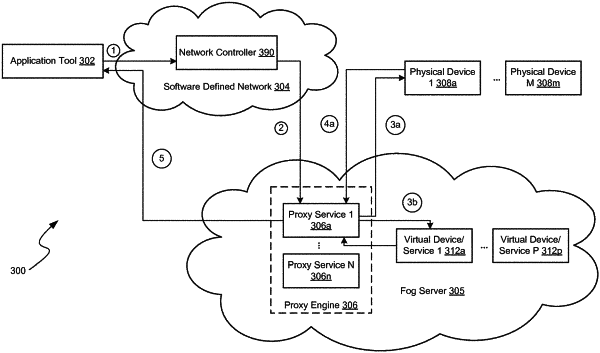| CPC H04L 67/56 (2022.05) [G06F 9/4856 (2013.01); G06F 9/5027 (2013.01); H04L 45/74 (2013.01); G06F 9/455 (2013.01); G06F 9/5038 (2013.01); H04L 67/10 (2013.01); H04L 67/12 (2013.01)] | 24 Claims |

|
1. A method for providing a proxy service in an industrial system, comprising:
providing in an industrial system comprising a network including a Software Defined Network with a software defined network controller node, a proxy service engine comprising at least one proxy service node;
the software defined network controller node intercepting communication of an incoming service request which is addressed to a target device and redirecting communication of the incoming service request to the at least one proxy service node, instead of the target device, based on a rule set, the rule set being configurable for coordinating provision of a composed service through the at least one proxy service node on behalf of the target device;
the at least one proxy service node processing the service request, and delivering the requested service as if the requested service is being handled by the target device without having to configure or reconfigure the target device to implement or support the provision of the requested service or to implement or support one or more services or tasks associated with the provision of the requested service,
wherein the at least one proxy service node handles communication on behalf of the target device,
wherein the software defined network controller node intercepts incoming service requests which are being communicated across the network to a network address of the target device, and redirects communication of all of the intercepted incoming service requests to the at least one proxy service node,
wherein the at least one proxy service node is configured:
to deconstruct the service request into two or more sub-requests,
to transmit at least one of the sub-requests to a physical or virtual device or service for processing, to augment functionality of the target device, and
to aggregate responses to the sub-requests into a service request response,
wherein at least one of the sub-requests is transmitted to the target device.
|